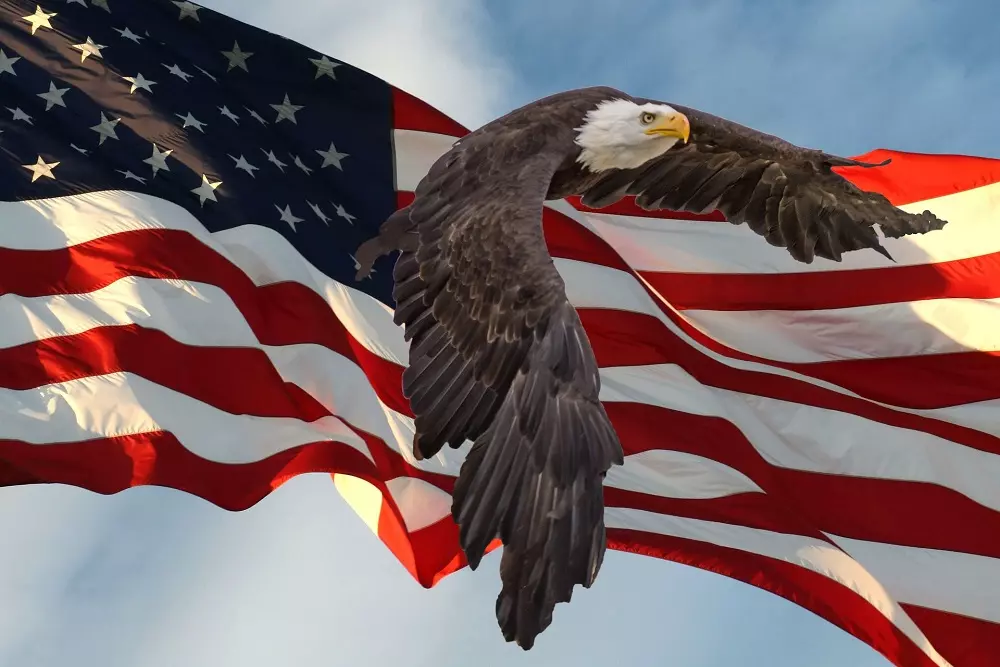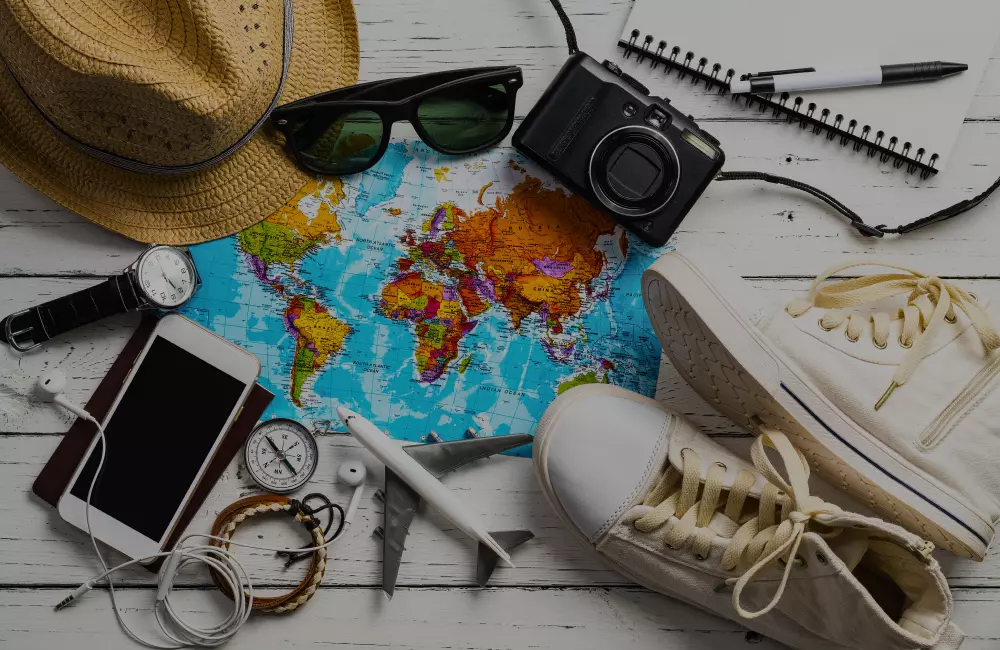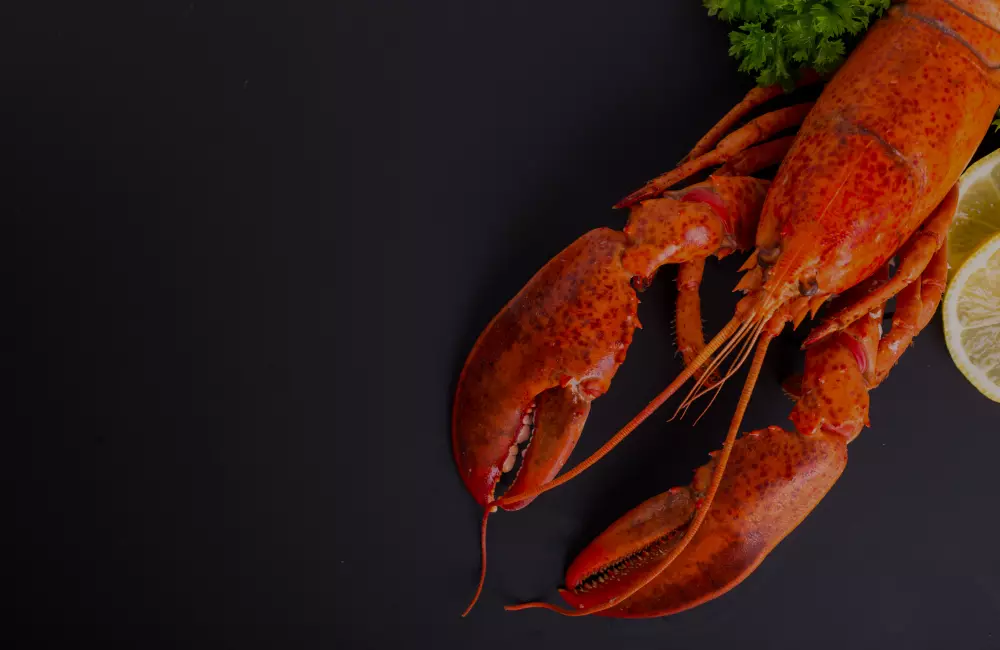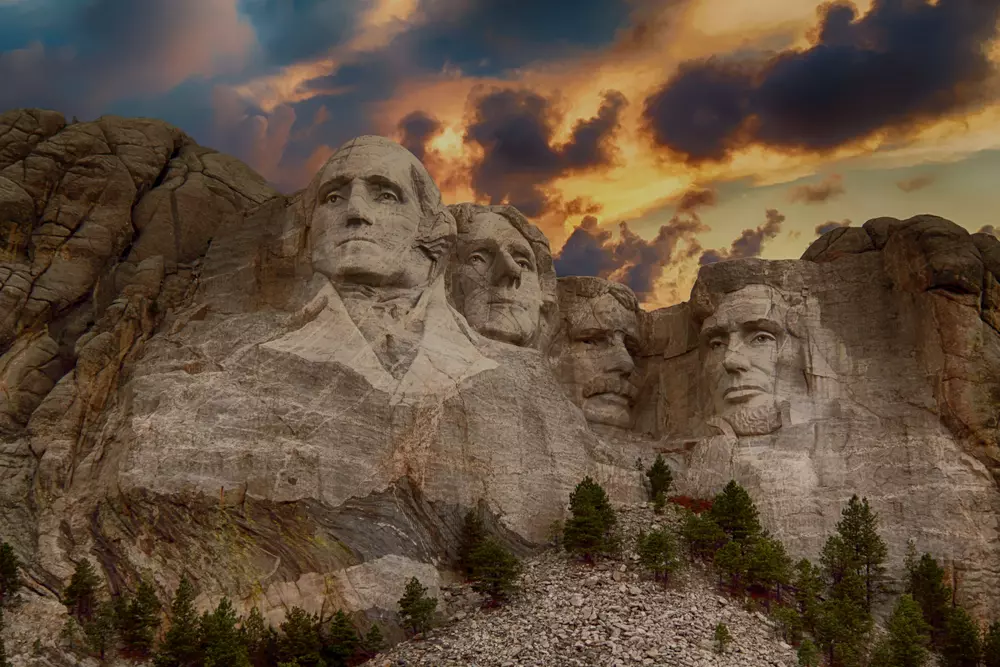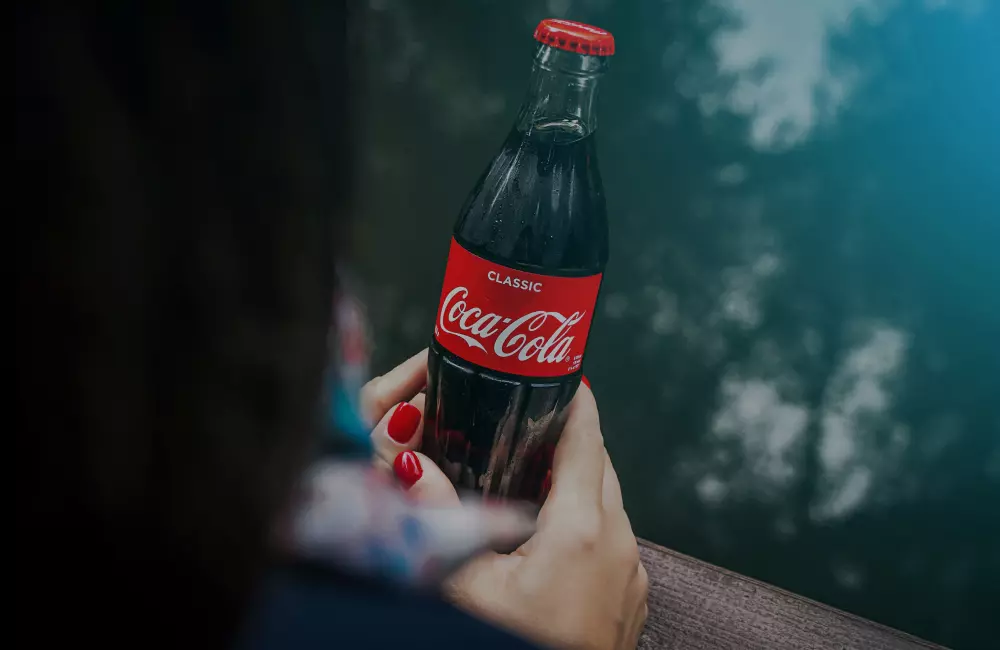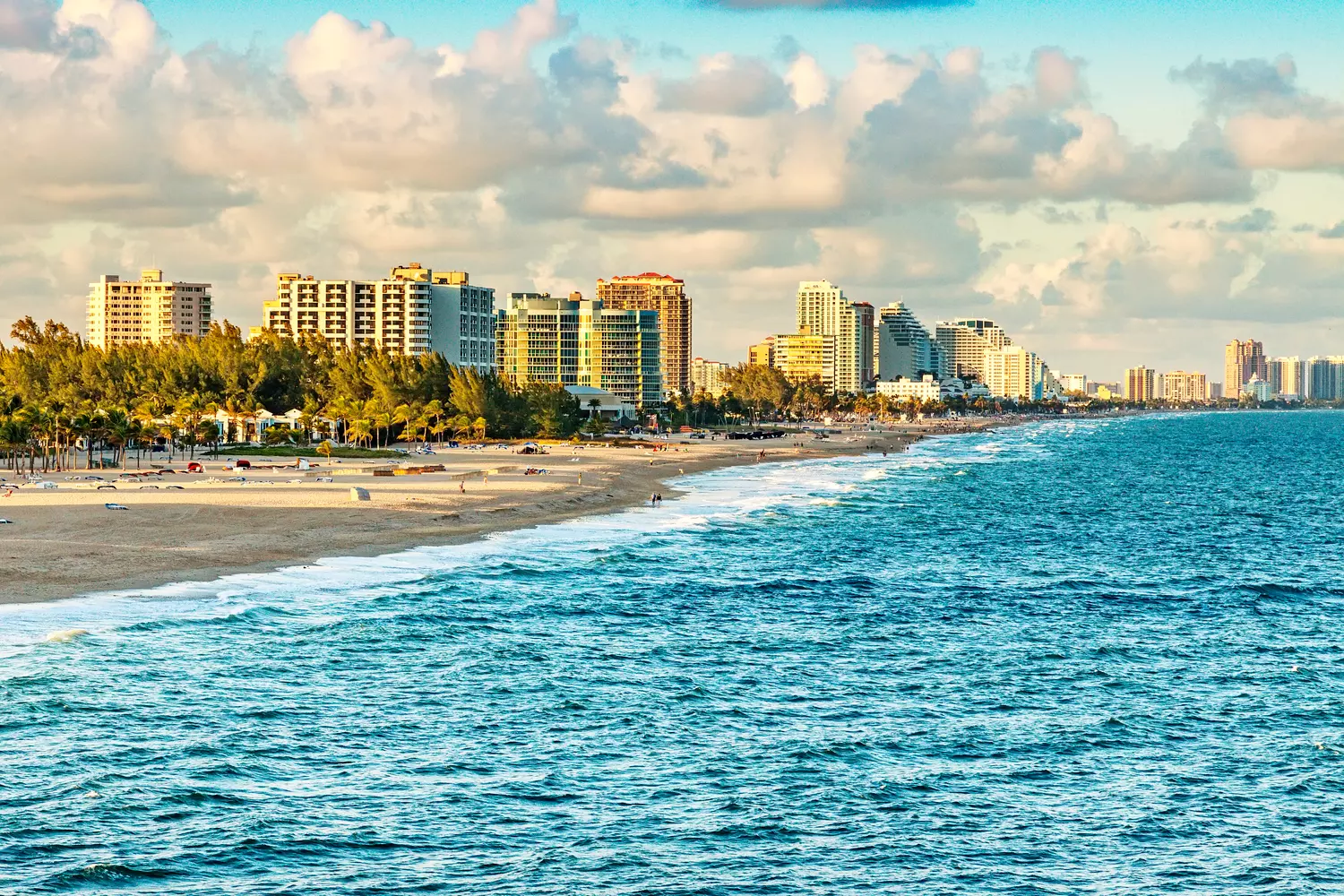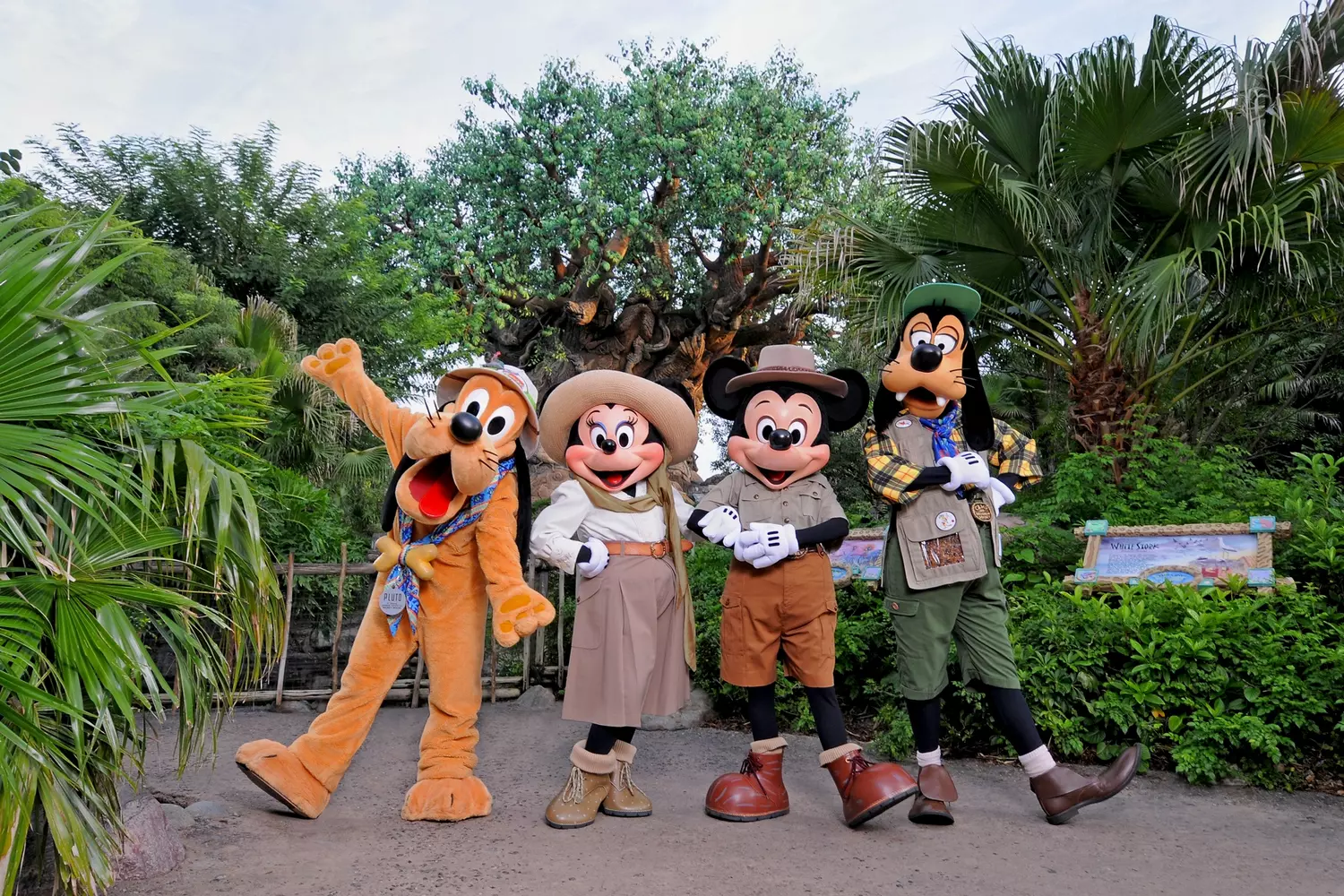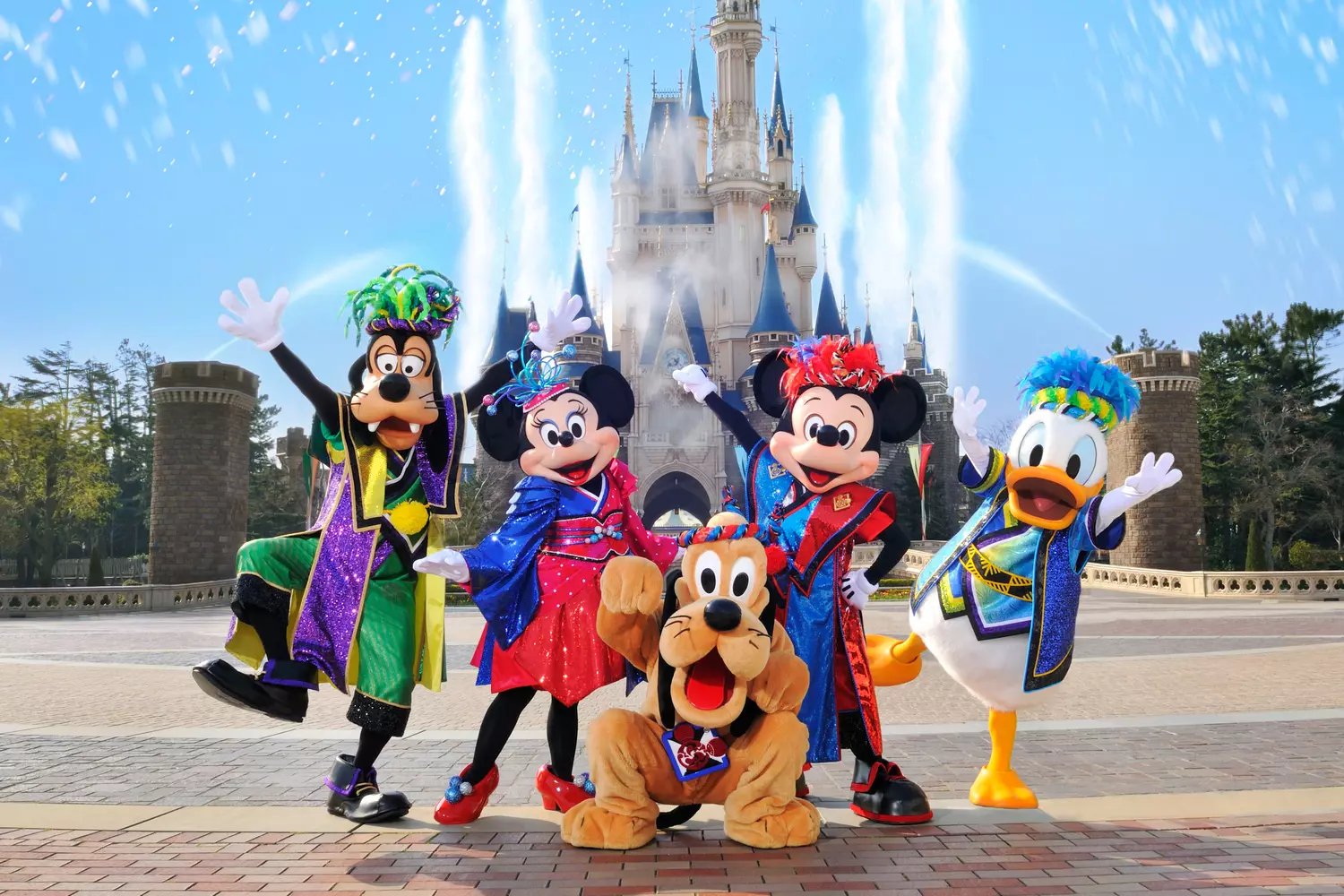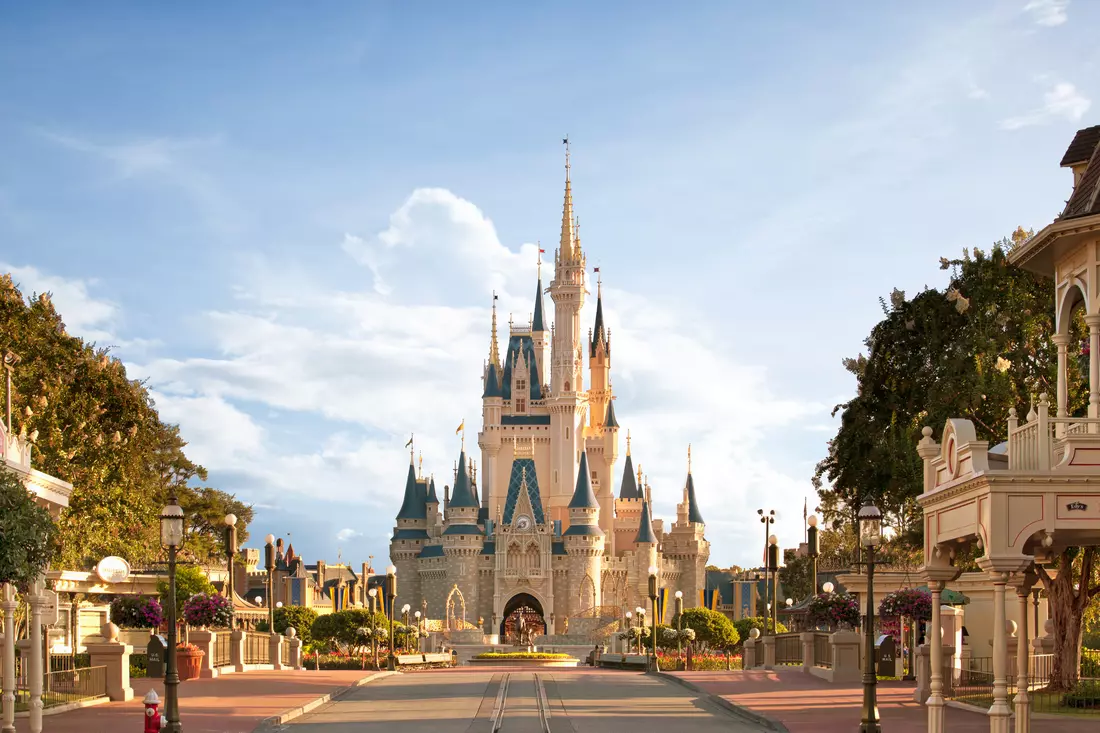Washington. The city of power, democracy, and one of the greatest cultural projects in the world — the Smithsonian Institution. It’s not just one museum, as many think. It’s an entire universe of knowledge, consisting of 21 museums, the National Zoo, and dozens of research centers spread throughout the U.S. capital and even beyond its borders.
And you know what’s most amazing? All Smithsonian museums are free to visit. No tickets, no lines for entry passes, no restrictions. Just walk in and be amazed.
Every corner of this cultural giant breathes discovery. Here you can step back millions of years into the past, admiring dinosaur remains, or look into the future by exploring NASA technologies. You can touch genuine history — from ancient artifacts to symbols of the fight for human rights. This is a place where classics coexist with experiments, and academic knowledge turns into an exciting adventure even for a child.
The Smithsonian Institution is an encyclopedia of humanity divided into halls and exhibitions. Walking through the museums, you feel like you’re flipping through a giant book where every page comes to life. You don’t need to be a historian or an art expert to feel part of something great here.
This unique place is where America’s history meets its future, where you can see a Tyrannosaurus skeleton, hold a piece of meteorite, admire original Van Gogh paintings, and immerse yourself in the world of aviation, art, science, technology, and culture. And all of this — in one city.

A fact that surprises many: James Smithson became the first and only Briton whose remains were officially transported and buried in the USA by decision of Congress. This says a lot.
Who was James Smithson, and why does the world's largest museum complex bear his name?
The history of the Smithsonian Institution begins with a mystery. Why does the largest museum complex in the USA bear the name of a man who never set foot in America? Who was James Smithson, and what motivated him to give an entire nation — not his own — a vast empire of knowledge?
James Smithson was born in the 18th century in London. He was the illegitimate son of the Duke of Northumberland and received an excellent education at Oxford, becoming a distinguished mineralogist and chemist. In his scientific work, he was driven by the idea that knowledge should be accessible to everyone. He believed in the power of enlightenment and the public good.
When Smithson died in 1829, leaving no heirs, his will shocked both British and American audiences: he bequeathed his entire estate — more than 100,000 gold sovereigns, roughly equivalent to $500,000 by 19th-century standards — to the United States of America. The reason? He wanted an institution to be established in Washington, called the Smithsonian Institution, “for the increase and diffusion of knowledge among men.”
“The world is so great, and man so small — yet he can leave a mark if he believes in knowledge,” wrote James Smithson in one of his letters.
At that time, the USA was a young republic, and this gesture caused a sensation. After 17 years of discussions and debates, the Congress decided to establish the Smithsonian Institution in the capital. Thus, the name of one modest English scientist became an immortal symbol of science, culture, and education.
Today, Smithson’s remains rest in a sarcophagus right at the entrance to the Institution’s main building on the National Mall — in the so-called Smithsonian Castle. Everyone who visits here seems to thank the man who believed in the power of knowledge — and in America — long before the country believed in itself.

A Long Journey from Gift to Reality
The Smithsonian Institution was founded on August 10, 1846. The establishment was created as a unique combination of a museum, research center, library, and educational endowment fund. The first building was the famous “Smithsonian Castle” — a Gothic red sandstone tower on the National Mall. It housed the library, scientific laboratory, exhibition hall, living quarters, and administration. Today, the “Castle” remains the heart of the institution — visitors can get information there, see Smithson’s original tomb, and experience the atmosphere of the 19th century.
- 01. The institution that grew alongside the country
Over the following decades, the institution expanded like a living organism, responding to scientific discoveries, social needs, and technological challenges.
- 1879 — the National Museum of Natural History was opened, which 40 years later exhibited its first specimen — an elephant skeleton.
- 1880s–1930s — the institution began conducting ethnographic expeditions worldwide, studying the cultures of Indigenous peoples of America, Africa, and Asia.
- 1946 — cooperation with NASA began, laying the groundwork for the future National Air and Space Museum.
- 1967 — the Smithsonian Astrophysical Observatory was founded at Harvard, where scientists research stars, black holes, and the structure of the universe.
- 2003 — the Smithsonian Channel was established to bring knowledge into millions of homes through television.
- 2016 — the grand opening of the National Museum of African American History and Culture took place, becoming a significant milestone in American memory.
- 02. Mind-blowing numbers
Today, the Smithsonian Institution includes:
- 21 museums, 9 research centers, the National Zoo, and more than 150 million objects.
- 7000+ staff members, including scientists, archaeologists, astronomers, ecologists, anthropologists, curators, and programmers.
- More than 30 million visitors annually.
- About 20% of all museum objects in the world are part of the Smithsonian collections.
It also manages one of the largest museum libraries and archives, which are actively digitized and made publicly accessible.
- 03. From scientific expeditions in Alaska to orbital missions
Few know that in 1871 the Smithsonian Institution organized the first scientific expedition to Alaska, long before it became part of the USA. The scientists of that time described flora and fauna, interacted with indigenous peoples, and laid the foundation for future ecological studies.
Since then, the Smithsonian Institution has become a global partner — from projects to preserve DNA of endangered species to analyzing climate change on a planetary scale. It collaborates with:
- NASA and ESA — for analyzing data from rovers and telescopes;
- MIT and Harvard — on projects in quantum physics, bioethics, and robotics;
- 04. The institution as a symbol of openness
Since its foundation, the Smithsonian Institution has remained free to all. This is not just a tradition — it is a profound philosophy. It does not sell knowledge, it shares it. In the 21st century, this sounds like a challenge, a counterweight to the privatization of education and science.
Every visit to the Smithsonian museums is a touch to the vast intellectual archive of humanity. Here you can see the original “Stars and Stripes” flag, the first Wright brothers airplane, the Apollo 11 capsule, King Tutankhamun’s mask, Native American rock art, prehistoric fossils, Japanese woodblock prints — all without paying a cent. - 05. A dream fulfilled
The great paradox of the Smithsonian Institution is that the man who founded it never set foot in America. Yet his idea inspired the creation of one of the most influential cultural and scientific complexes in the world. He believed that knowledge is not a luxury but the air that every person must breathe.
The Smithsonian Institution is America telling the world about itself honestly, vividly, and truly.
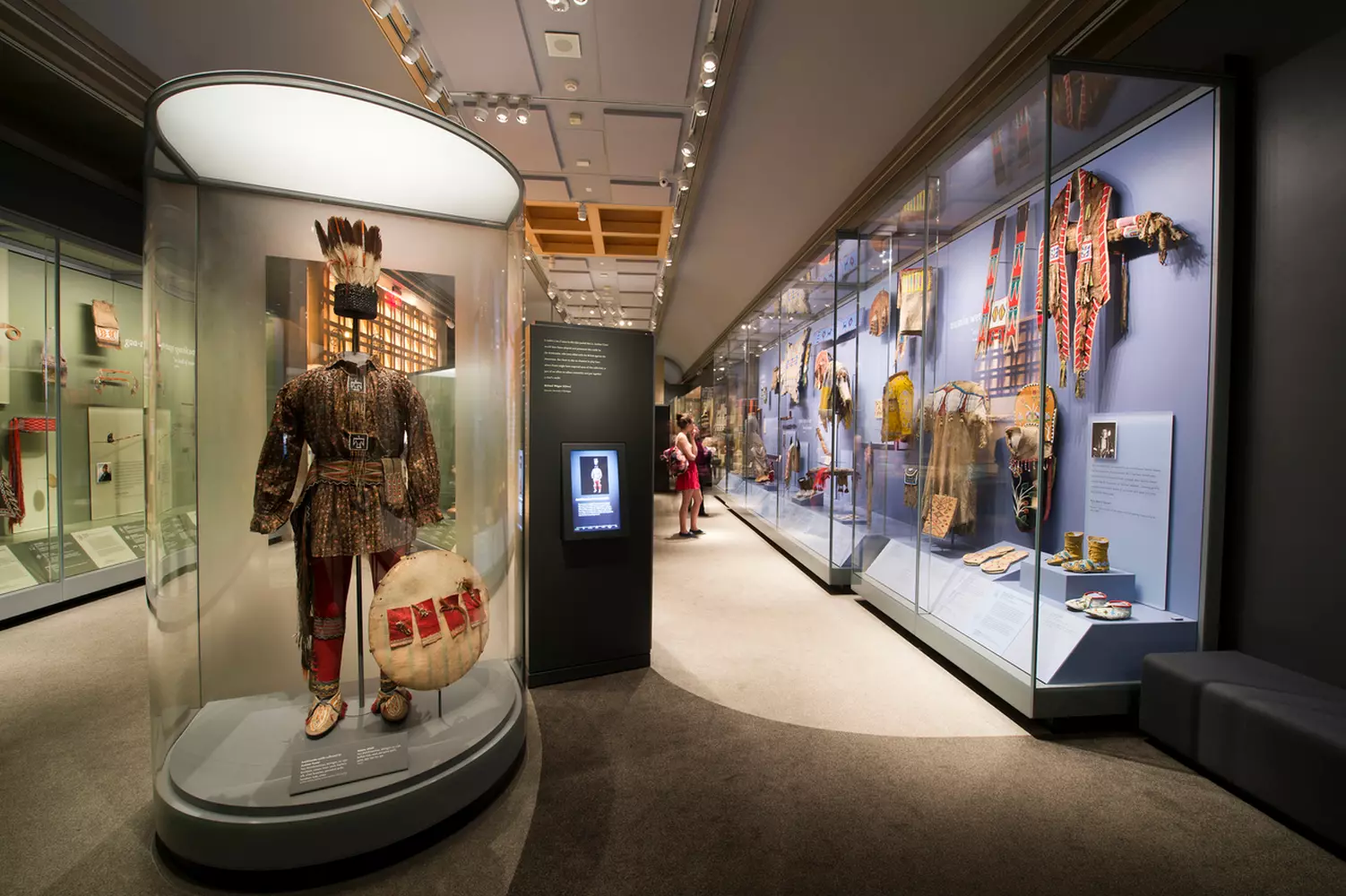
The National Mall — an open-air museum and the heart of Washington, D.C.
If the Smithsonian Institution is a universe, then the National Mall is its main orbit. Stretching over 3 kilometers from the Capitol to the Lincoln Memorial, this wide green strip is not just a park, but the epicenter of culture, history, and science in the USA. It is here, within walking distance, that the most important Smithsonian museums are concentrated, each worthy of a separate visit.
Walking through the National Mall is like opening an encyclopedia and literally stepping from one chapter to another.
- 01. The Smithsonian Institution Building — the "Smithsonian Castle"
This is the first and most recognizable building of the institution, built in 1855 in the Gothic Revival style from red sandstone. It is often called the "castle" — and for good reason: its facades, towers, and arches resemble European medieval palaces. Inside you will find:
- A visitor center with interactive exhibits;
- An overview of all the museums;
- The tomb of James Smithson — which was relocated from Genoa in 1904;
- A cozy garden, hidden from the noise of the crowds.
Tip: start your museum tour here — it will help you plan your route efficiently.
- 02. National Air and Space Museum
This is one of the most popular museums in the world. Here you can see the Wright brothers' airplane, the Apollo 11 lunar module, satellites, jet engines, spacesuits, rover models, and even experience immersive flight simulators. Highlights include:
- Renovation completed in 2022 — offering more space and advanced technology;
- Planetarium, IMAX theater, and many interactive exhibits;
- Suitable for both adults and children — everyone will find their own "wow!"
- 03. National Museum of Natural History
Dive into the world of evolution, minerals, ocean life, and dinosaurs. On display are:
- The skeleton of a Tyrannosaurus Rex;
- One of the largest diamonds in the world — the mysterious Hope diamond;
- Models of volcanoes, collections of fossils, butterflies, insects, corals, and meteorites.
Interactive halls let you touch fossils, explore textures, and even smell the Earth of different eras.
- 04. Arthur M. Sackler Gallery and Freer Gallery of Art
Both galleries are united under one structure: the National Museum of Asian Art. Ideal for lovers of Eastern art. Here you will find masterpieces of:
- Chinese, Japanese, Indian, Islamic, and Korean cultures;
- Painting, calligraphy, ceramics, sculpture, and ancient manuscripts;
- From exquisite porcelain cups to mosaics from Iran.
The Freer Gallery is famous for housing the only permanent collection of James Whistler’s works, including the iconic “Arrangement in Grey and Black No.1,” known as "Whistler’s Mother."
- 05. Hirshhorn Museum and Sculpture Garden
If classical art is closer to your heart — head to the Freer galleries. But if you want provocation, modernity, and contemplation — welcome to Hirshhorn. Inside:
- Exhibitions of contemporary and conceptual art;
- Works by Andy Warhol, Yayoi Kusama, Picasso, and Banksy;
- A sculpture garden featuring works by Henry Moore and Rodin.
Each exhibition is like a separate performance that can evoke both admiration and bewilderment. That is its true value.
- 06. National Museum of African Art
A collection of the artistic heritage of a continent that has long been in the shadow of the museum world. Exhibits include:
- Ancient Benin bronzes;
- Masks, ritual objects, textiles;
- Contemporary African art and photography.
The museum helps break stereotypes and deepen understanding of the richness and diversity of African cultures.
- 07. National Museum of American History
A place where everything connected to the culture, struggles, victories, and everyday life of the USA comes alive. Main exhibits include:
- The original flag that inspired the US anthem (Star-Spangled Banner);
- The kitchen of Julia Child — the legend of American gastronomy;
- Lincoln’s chair, Jimi Hendrix’s guitar, the first Apple;
- Machines, trains, cars, superhero costumes.
The museum covers absolutely all spheres of the country’s life, from politics to pop culture.
- 08. Ripley Center
A multifunctional space, often unnoticed. The center is connected to other museums by underground passages. Temporary exhibitions, international projects, seminars, lectures, and rare archive exhibitions often take place here. Located near the castle and — surprise! — it extends several levels underground. A true underground cultural hub! - 09. National Museum of the American Indian
A museum with unique architecture: the building seems to “grow” from the earth. Its design is inspired by natural forms and symbols of the indigenous peoples of America. Highlights include:
- Artifacts and costumes from the Aleuts to the Maya;
- Stories of genocide, resistance, survival;
- Contemporary voices of native authors and artists;
- A restaurant serving authentic Native cuisine — a must-try for gourmets.
- 10. Arts and Industries Building
This is the second building constructed under the Smithsonian Institution. Since 1881, it has served as an experimental space at the intersection of art, design, and technology. Currently it hosts:
- Temporary and innovative exhibitions;
- Experiments at the crossroads of science and creative industries;
- The FUTURES exhibition — about what tomorrow will be like.
The building itself is an architectural gem, combining classicism and metallic elements.
The National Mall is a living stage of American culture. It hosts rallies, parades, concerts, and festivals. But most importantly — it is a place where culture meets society. With every step, every hall, and every painting, you don’t just look at exhibits — you feel the pulse of the country.
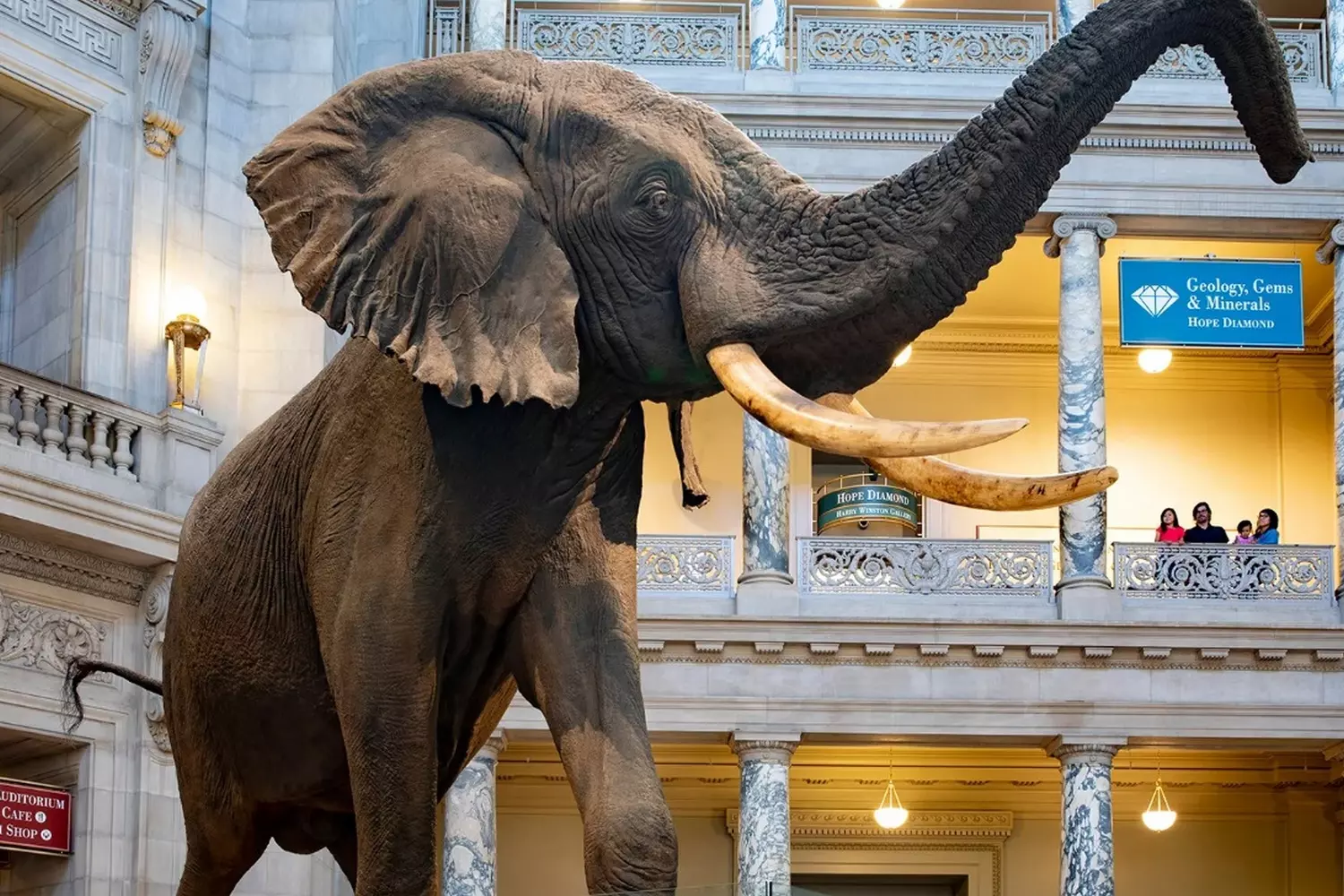
Treasures Beyond the National Mall: Unusual Smithsonian Museums in Washington, D.C.
The National Mall is just the tip of the iceberg. Beyond its borders lie museums that don’t often appear on postcards but leave a lasting impression. These are places for those seeking depth, authenticity, and vivid discoveries. Below is a detailed guide to the “hidden gems” of the Smithsonian Institution.
- 01. Anacostia Community Museum
Located in the eponymous neighborhood of the city, this museum has a strong local focus. It was established to study and support the lives of urban communities, especially African Americans. It tells not the story of the country as a whole, but of ordinary people — activists, families, workers — who shaped Washington and its culture. What makes it interesting:
- Thematic exhibitions on urbanization, migration, ecology;
- Exhibitions created with the participation of local residents;
- Youth and school engagement programs promoting cultural heritage.
This is not just a museum, but a center for civic dialogue, where the city’s history comes alive.
- 02. National Museum of African American History and Culture
One of the newest and most emotional museums in the institution. Its building is an architectural masterpiece inspired by the iron lattices of traditional West African sculpture. The exhibits cover the entire journey of the African American people — from slavery to the present day. Must-see galleries:
- Slavery and the human trafficking trade;
- Civil rights and the fight for equality;
- Contributions to science, culture, sports, and music;
- Contemporary African American voices and movements.
Important: advance reservation is required. The exhibition is popular, and deservedly so.
- 03. National Portrait Gallery
A place where history looks you straight in the eye. Here you’ll find portraits of American presidents, cultural figures, scientists, and athletes, creating a living chronicle of the nation. Interesting features:
- The “America’s Presidents” gallery — the official collection of portraits of all U.S. presidents;
- Portraits of Maya Angelou, Stephen Hawking, Serena Williams;
- Exhibits on fashion icons, queer activists, and heroes of “invisible America”;
- Photography, painting, digital art.
Special attention is paid to diversity and contemporaneity — the gallery is constantly updated.
- 04. National Postal Museum
Often overlooked — and undeservedly so. Located near Union Station, it offers an amazing journey into the history of mail, delivery, and communications in the U.S. What you can see:
- Seals and letters of George Washington and Abraham Lincoln;
- The first mail coach and Pony Express artifacts;
- A rare stamp gallery, including the world’s most expensive — the “British Guiana”;
- Interactive zones where you can sort letters and even send yourself a postcard.
This is one of the most family-friendly museums — the interactive exhibits are outstanding.
- 05. Smithsonian American Art Museum
Often confused with the Freer Gallery or the National Gallery, this is the only museum fully dedicated to American art. The collection covers:
- Works by American artists from the colonial era to the 21st century;
- Art of the Wild West, pop art, realism, folk art;
- Exhibits of Native American and Latin American artists;
- Multimedia exhibitions and installations.
Located in the same building as the Portrait Gallery — a perfect combo for one day.
- 06. Smithsonian Center for Folklife and Cultural Heritage
This is not a traditional museum but a scientific and cultural center dedicated to the living heritage of the world’s peoples. It organizes the annual Folklife Festival on the National Mall, where you can see artisans, hear music, and participate in culinary shows and dances. What it does:
- Collects oral history, music, language;
- Works with minorities and endangered cultures;
- Maintains online archives of folk art and traditions.
This is the heart of the non-museum Smithsonian, beating to the rhythm of the world’s diversity.
- 07. Renwick Gallery
A small but amazingly Instagrammable museum of decorative and applied arts. Located near the White House, in a Second Empire style building. Exhibits include:
- Contemporary American craft art;
- Glass, ceramic, textile sculptures;
- Room-filling installations (for example, “Wonder”);
- Exhibitions at the intersection of design, technology, and craft.
The perfect place for those seeking aesthetic inspiration and unexpected forms.
- 08. Archives of American Art
The world’s largest archive dedicated to American visual art. It houses personal letters of artists, sketches, diaries, exhibition catalogs, interview recordings, and oral art histories.
It mainly operates as a research center, but hosts temporary exhibitions that reveal the behind-the-scenes of the art world. - 09. Marine Corps Historical Collection
Although technically not always open to the general public, this is part of the Smithsonian’s archival and research structure, holding materials on the history of the U.S. Marine Corps. Here you will find:
- Documents, photographs, uniforms, and personal belongings;
- Studies of military operations and daily life;
- Audio and video interviews with veterans.
For researchers and enthusiasts, this is a true treasure trove.
Visiting even a few of these places will make you realize: the Smithsonian Institution is not just a collection of buildings, but a cultural ecosystem encompassing history, science, society, and art in the broadest sense.
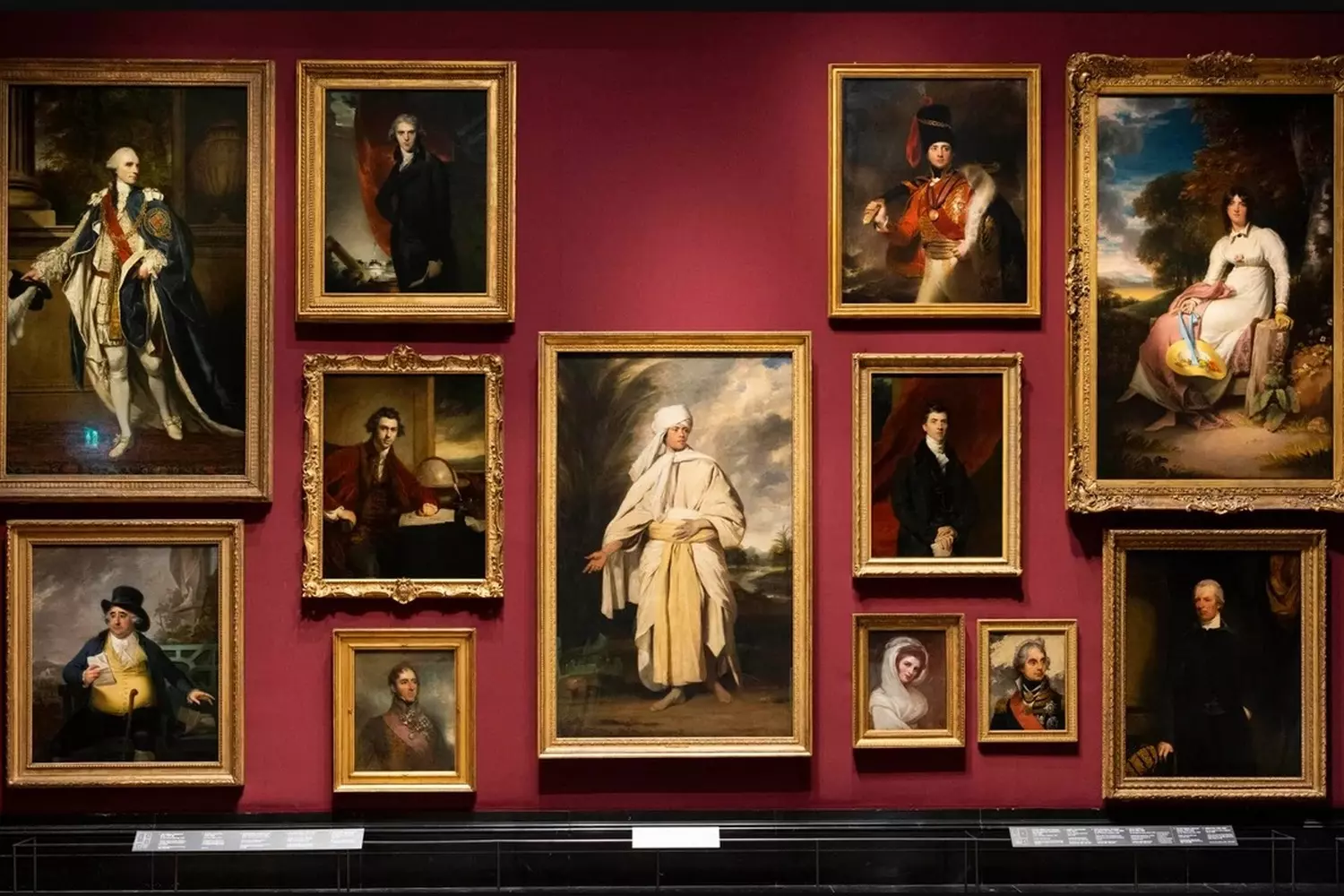
The National Zoo — the living heart of the Smithsonian Institution
When it comes to the Smithsonian Institution, many immediately imagine museum halls filled with priceless artifacts, but within it lies a true living museum — the National Zoo. This is not just a place for walks and entertainment, but an important center for nature conservation, scientific research, and education, which has become an integral part of Washington’s cultural and educational landscape.
- 01. A unique place with a rich history
The National Zoo was founded in 1889 and from the very beginning was conceived as a scientific research institution, not merely a “nursery” for exotic animals. Being part of the Smithsonian Institution guarantees a high level of animal care, as well as continuous development of species conservation programs and biological studies. - 02. Science and nature conservation in action
As part of a major research institution, the National Zoo is a true center for biological research. Leading zoologists, veterinarians, and ecologists work here — not only caring for the animals but also restoring populations of endangered species, studying animal behavior, and developing new methods of protection.
One of the zoo’s most famous residents are the giant pandas — symbols of nature conservation and international cooperation. Breeding and protection programs for these rare mammals have global significance, and the opportunity to see them live is a special treat for visitors. - 03. An educational mission
The zoo is open to everyone — from toddlers to adults — offering numerous interactive exhibits, lectures, and educational events. Visitors can learn about animal biology, ecological issues, and ways to solve them. Family tours and workshops make science accessible and exciting, awakening love and respect for nature across generations. - 04. A living part of a large institution
As part of the Smithsonian Institution, the National Zoo complements the museum exhibitions with living “exhibits” that showcase the diversity of life on our planet. It fits organically into the overall mission of the institution — to spread knowledge and inspire care for the world around us.
Visiting the National Zoo is an opportunity not only to enjoy the beauty and diversity of wildlife but also to experience cutting-edge scientific progress that helps preserve our planet for future generations.
What awaits you at the National Zoo: routes, inhabitants, and impressions
The National Zoo is not just a walk among enclosures but a real journey through the world’s ecosystems gathered in one place in the heart of Washington. It covers over 160 acres (about 65 hectares) and is divided into thematic zones, each revealing a unique corner of wildlife.
- Asia Trail — a journey to Asia
This is one of the most popular areas, home to the legendary giant pandas — the zoo’s national treasure. Here you can watch these black-and-white giants enjoying their leisurely snacks, as well as the red pandas, Asian otters, tapirs, and various mammals of Southeast Asia.
Tip: It’s best to come in the morning — the animals are more active, and there are fewer people at the enclosures. - Elephant Trails — home of the elephants
This zone is dedicated to African elephants, allowing visitors to see these majestic animals in spacious conditions. Educational demonstrations and lectures about elephant behavior, intelligence, and survival challenges in the wild are held here. - Great Cats — the predator territory
In this section, you will find African lions, snow leopards, jaguars, and cheetahs. You can observe predators playing, napping, or watching visitors. The real show starts during feeding time — a thrilling spectacle! - Primates — primates from around the world
The primate zone features orangutans, chimpanzees, lemurs, and small monkeys. Some species live in a unique system of rope bridges that pass right above visitors’ heads — creating the feeling that you’ve stepped into the jungle. - The Reptile Discovery Center — the world of reptiles and amphibians
Fans of snakes, frogs, and lizards will be delighted. Here live green anacondas, poisonous tree frogs, geckos, turtles, and rare species of crocodiles. The terrariums replicate natural conditions so that the animals feel as if they were in the wild. - The Bird House — a bird paradise
After renovation, this pavilion became home to hundreds of birds from various climate zones. Here you can hear exotic songs, see bright plumage, and learn more about migrations, adaptations, and threats faced by birds. - Amazonia — a corner of South America
A closed ecosystem with humid jungles, piranhas swimming in aquariums, iguanas, capuchin monkeys, and rare tropical fish. This zone is especially popular with children — bright, noisy, full of colors and scents.
What to do at the zoo: not just watching, but participating
- 01. Children’s zones and playgrounds
In different parts of the zoo, there are themed play areas where children can feel like zoologists, take part in “excavations,” touch interactive animal models, and even peek into miniature laboratories. - 02. Interactive exhibits and lectures
Every day there are meetings with animal keepers, lectures, feeding demonstrations, and tours of restricted areas. Check the schedule at the entrance — you might catch something truly unique. - 03. Shops and cafes
The zoo has eco-friendly cafes and souvenir shops selling books, toys, and handmade goods. Purchases here contribute to supporting animal protection programs. - 04. Walks and relaxation in nature
The zoo is also a great place for a leisurely walk. Paths, benches, shaded areas, and beautiful garden spots make it an ideal option for family rest and photo sessions.
Useful tips for visitors
- Entry is free, but it’s recommended to reserve your visit time in advance on the official website, especially during the high season.
- It’s best to arrive at opening time (10:00 AM) — animals are more active, and the area is less crowded.
- Wear comfortable shoes — the walk takes at least 2–3 hours, or even the whole day.
- Bring a water bottle and sunscreen, especially in summer.
- Wheelchairs and strollers are available for rent on site.
Visiting the National Zoo is not just an encounter with wildlife, but an emotional and intellectual experience. It’s a chance to learn how humans can care for the planet, even in the heart of a big city.

New York and the Smithsonian Institution: A Cultural Bridge Between Capitals
The Smithsonian Institution is primarily associated with Washington, D.C., but its cultural influence also extends to New York City — the capital of style, design, and museum evolution. Here are three key Smithsonian establishments, each offering a truly unique experience. Below is a detailed overview of each.
- 01. Cooper Hewitt — Smithsonian Design Museum
- Address: Upper East Side, Manhattan, Carnegie family mansion
- Founded: 1897 (joined the Smithsonian Institution in 1967)
The only museum in the USA fully dedicated to both historic and contemporary design. The perfect place for anyone wanting to understand how the objects that surround us — from chairs to fonts — are created. What to expect: - More than 250,000 design objects spanning from antiquity to the digital age;
- Permanent exhibitions on the development of decorative arts, industrial design, and architecture;
- Interactive technologies: you can create your own prints, fonts, and textures right in the galleries;
- Special exhibitions dedicated to sustainable design, urbanism, innovations in fashion and IT;
- The Design Garden — an open space where you can relax and get inspired outdoors.
This museum teaches you to see beauty in everyday things. Whether you’re a designer or simply curious, emotions are guaranteed.
- 02. George Gustav Heye Center / Branch of the National Museum of the American Indian
- Address: Alexander Hamilton Custom House building, Bowery, Lower Manhattan
- Opened as part of the Smithsonian Institution: 1989
This is the New York branch of the National Museum of the American Indian, whose main office is in Washington. The building itself is an architectural masterpiece in the Beaux-Arts style, and inside is one of the most profound and emotional collections of indigenous cultures of North and South America. Highlights of this center: - The permanent collection includes more than 800,000 artifacts, many of which are sacred objects;
- Detailed exhibitions on the cultures of the Maya, Navajo, Inca, Pueblo, Cherokee, and dozens of other peoples;
- Contemporary art by indigenous artists: paintings, multimedia, film, music;
- Thematic exhibitions focused on migration, colonization, spiritual practices;
- Frequent lectures, concerts, film screenings, and workshops — all free of charge.
This museum is not just a repository of relics but an active voice of indigenous peoples, restoring their right to cultural self-representation.
- 03. American Museum of Natural History (in collaboration with the Smithsonian Institution)
- Address: Central Park West, Manhattan
- Founded: 1869
Legally not part of the Smithsonian Institution, but closely collaborates with it — especially in astronomy, paleontology, and anthropology.
One of the largest and most visited natural history museums in the world. Joint research projects and archival databases with the Smithsonian make it part of a shared scientific ecosystem. Must-see highlights: - Huge dinosaur halls, including a 30-meter titanosaur;
- Life-size model of a whale in the Hall of Ocean Life;
- The Hayden Planetarium and the Rose Center for Earth and Space (created with the participation of astrophysicist Neil deGrasse Tyson);
- Evolutionary halls: from the first cells to Homo sapiens;
- Permanent exhibitions on climate, Earth, and its changes;
- Sections on ethnology and the lives of indigenous peoples worldwide (from the Amazon to the Arctic).
Although formally not a “Smithsonian museum,” it actively participates in scientific consortia and exchanges with it, and some exhibits result from joint research.
The Smithsonian Institution in New York City is a dialogue of design, identity, and science with a metropolis where millions of faces and stories pass daily. Here, there is less formality and more provocation and relevance. These are not just “museums on the go,” but full-fledged cultural centers worthy of a separate visit. If you are planning a trip to New York, be sure to include these museums in your itinerary.
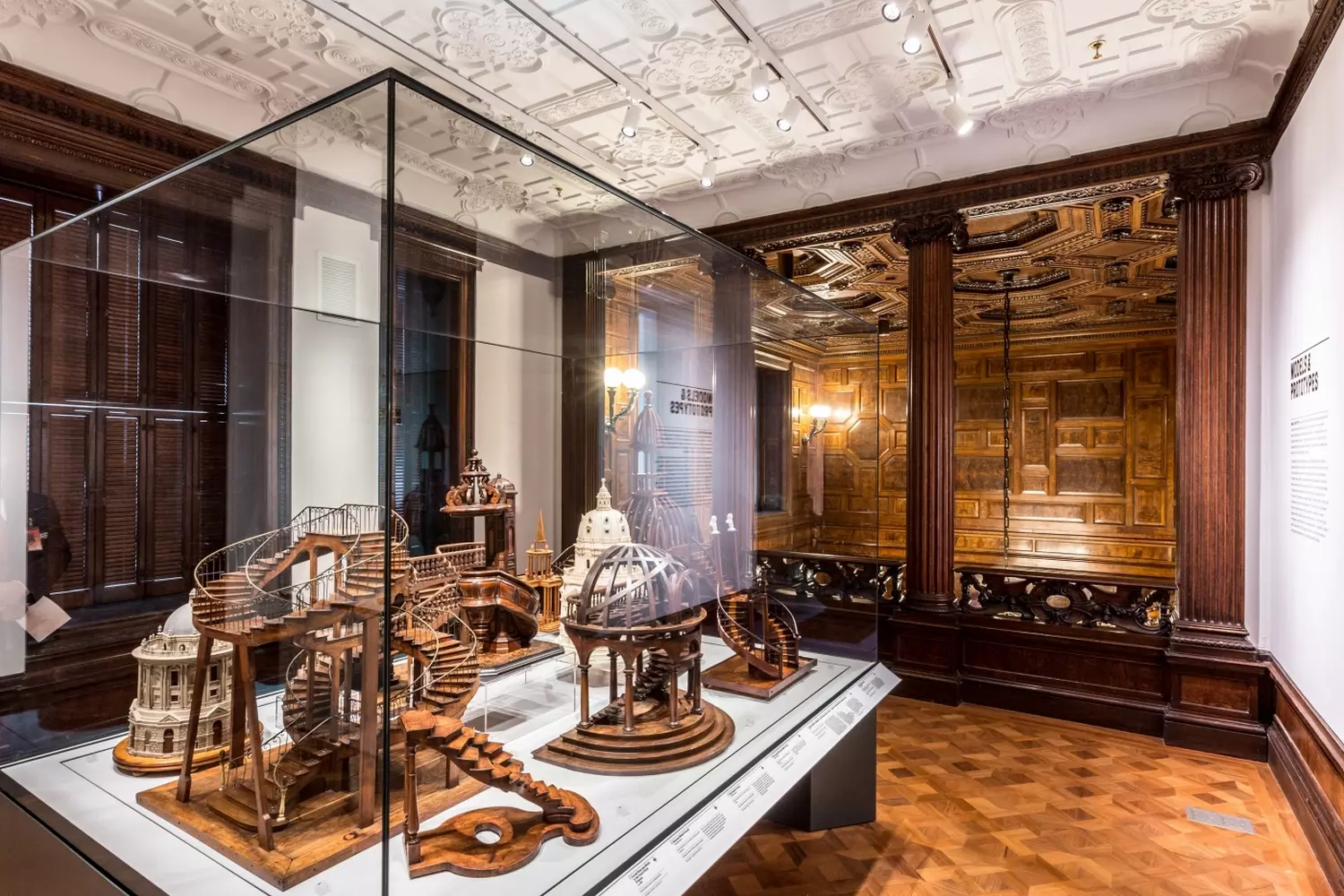
Beyond the Capitals: The Scientific Universe of the Smithsonian Institution in Other States
Many people think that the Smithsonian Institution is just the museum paradise of Washington, D.C. But in reality, it is a vast scientific and cultural network covering almost every state and even other countries. Expeditions, laboratories, biological stations, archives, observatories, nature reserves — all of this is part of the Smithsonian Institution.
If the museums in the capital and New York City are the showcase, then the sites below are the engine of knowledge, where discoveries are made, nature is preserved, and the universe is studied.
- 01. Stephen F. Udvar-Hazy Center for Aviation and Space (Udvar-Hazy Center, VA)
- State: Virginia, near Washington Dulles International Airport
- Opened: 2003
A huge hangar that is part of the National Air and Space Museum. It houses the most impressive exhibits that do not fit into the museum on the National Mall. What you will see here: - The Space Shuttle Discovery — a NASA legend;
- The Enola Gay plane, which dropped the first atomic bomb;
- SR-71 Blackbird — the fastest airplane in history;
- More than 150 airplanes and helicopters;
- Interactive simulators, an IMAX theater, and an observation tower where you can watch takeoffs and landings live.
This center is a perfect option for aviation enthusiasts and travelers passing through Dulles Airport.
- 02. Smithsonian Environmental Research Center (SERC, MD)
- State: Maryland, on the Chesapeake Bay shore
- Founded: 1965
Here they study coastal, forest, wetland, and estuary ecosystems. Scientists, biologists, and students from all over the world work on 1000 acres of nature. What makes the center unique: - Research on climate change, water pollution, animal migration;
- The "Citizen Science" program — anyone can participate in real scientific projects;
- Laboratories, dock stations, and nature trails for visitors;
- Educational programs for schoolchildren, students, and teachers.
The center combines full-fledged science with opportunities for ordinary people to participate in environmental monitoring.
- 03. Harvard-Smithsonian Center for Astrophysics (CfA, MA)
- State: Massachusetts, Cambridge
- Founded: 1973
One of the world's leading centers for astrophysics and cosmology, combining resources from Harvard University and the Smithsonian Astrophysical Observatory. What happens here: - Development of telescopes, satellites, and instruments for NASA;
- Research on black holes, exoplanets, dark matter;
- Creation and analysis of space data (including from the Chandra telescope);
- Lectures, public events, open days.
This center is the brain of Smithsonian space science and a place where new hypotheses about the universe's structure are born.
- 04. Museum Conservation Institute (MCI, MD)
- State: Maryland, Suitland
- Opened: 2006
This is a high-tech laboratory where exhibits from all Smithsonian museums are saved, restored, and preserved. What they do here: - Chemical, microscopic, and spectroscopic analysis of artifacts;
- Restoration of ancient textiles, documents, metals, ceramics;
- Training programs for museum professionals worldwide;
- Unique technologies for protection against aging and microbiological damage.
This center is an unsung hero of the museum world without which millions of artifacts would have been lost.
- 05. Smithsonian Tropical Research Institute (STRI, Panama + USA)
- Main Campus: Panama
- Research bases in Florida and California
- Founded: 1923
This is the largest center in the world for studying tropical ecosystems. It plays a leading role in research on biodiversity, forests, climate, and marine systems. Key areas: - Study of tropical forests, coral reefs, mangroves;
- Genetics of tropical plants and animals;
- Collaboration with international conservation organizations;
- Participation in a global biomonitoring network.
This institute is a scientific outpost in the fight for climate resilience and forest preservation worldwide.
- 06. Smithsonian Conservation Biology Institute (SCBI, VA)
- State: Virginia, Front Royal
- Founded: 1974
A closed scientific center where endangered species are bred and rehabilitated in conditions close to their natural habitats. What happens here: - Breeding rare species: Pallas’s cats, red wolves, giant pangolins;
- Research in genetics, reproduction, and veterinary medicine of wildlife;
- Development of global conservation strategies;
- Special tours, open days, and educational programs.
This is an invisible but critically important institute that protects the planet’s genetic diversity.
All these centers are the invisible heroes of the Smithsonian knowledge empire. It is here that discoveries are made, solutions for the future are formed, and work is done that feeds museums with new meanings and exhibits. This scientific backbone makes the Smithsonian Institution not just a collection of artifacts, but a living organism of science, culture, and nature conservation.

How to Make Your Visit to the Smithsonian Museums Comfortable and Memorable: Essential Tips for Visitors
Visiting the Smithsonian museums is always an exciting journey into the world of science, art, and history. To make your visit as smooth and enjoyable as possible, it’s important to keep a few key tips in mind. Here’s a detailed guide to help you plan your trip so you can get the most out of your experience without any hassle.
- Free admission is the biggest plus
The first thing that delights all visitors is that entry to all Smithsonian museums is completely free. Yes, you can stroll through world-class galleries, explore unique exhibits, attend exhibitions, and participate in interactive programs without spending a dime on tickets. This is truly rare for museums of such scale and caliber. - Advance booking — when and why it’s needed
While most museums are open to everyone without restrictions, some require advance booking of visiting times. This especially applies to very popular locations like the National Museum of African American History and Culture. Due to high demand, you can’t enter without prior online registration.
This convenient system helps avoid crowds, makes visits comfortable, and guarantees you entry at a convenient time. It’s recommended to check museum websites ahead of time and book your visit if you plan to see such Smithsonian “hot spots” - The National Mall — the heart of the museum route
Most iconic museums are located along the famous National Mall — a vast green space between the Capitol and the Lincoln Memorial. It’s not only a beautiful place for walks but also a very convenient route for exploring museums on foot.
Walking along the Mall, you can easily get from one museum to another within minutes while enjoying views of monuments, flags, and nature. This route lets you use your time efficiently and explore main exhibitions without rushing. - Opening hours — time for exploration
Smithsonian museums are open daily from 10:00 AM to 5:30 PM. This consistent schedule with no days off gives flexibility to plan your visit any day of the week.
To not miss the chance to see your favorite exhibits, it’s best to come closer to opening time — around 10 AM. At this hour, there are fewer visitors, and you can enjoy the exhibitions in a calmer atmosphere. - Summer and holidays — be prepared for lines
Summer is the peak tourist season in Washington, combined with holidays and school vacations. During these periods, museums can be crowded, and even free admission won’t save you from queues at popular exhibitions and security checkpoints.
If you want to avoid crowds, plan your visit for a weekday and come early in the morning. Also, be sure to check official museum websites in advance — sometimes they post tips on the best visiting times.
These simple but important tips will help make your Smithsonian museum visit comfortable, enriching, and enjoyable. After all, the main goal is not just to see exhibits but to truly feel the spirit and history of these unique places.
10 life hacks for the perfect Smithsonian museum visit: how to see everything without getting tired
The Smithsonian Institution includes 19 museums, a zoo, and millions of exhibits that you can’t cover in a single day. But with the right hacks, you can avoid crowds, save time, and get the most out of your visit. Here are proven tips from experienced visitors and staff.
- 01. Start with the most popular spots early in the morning
Arrive at opening time (8:30 AM) at the National Air and Space Museum or the National Museum of Natural History. The first hour is the quietest when you can take photos at the Apollo 11 exhibit or the Hope Diamond without waiting in line. - 02. Download the Smithsonian app
The free app includes maps of all museums with marked restrooms and relaxation areas, schedules of tours and shows, and offline guides to major exhibits. - 03. Use the “secret” entrance
The National Museum of Natural History has a side entrance on Madison Street—there are almost no lines there, unlike the main entrance on the National Mall. - 04. Take free manual wheelchairs
Even if you’re not disabled: manual wheelchairs are available at all museums (first come, first served). They can save you if you get tired — the area is huge. - 05. Eat smart
Avoid museum cafes during lunch hours (12:00–2:00 PM) — the lines are huge. It’s better to have a snack at Pavilion Café (Hirshhorn Sculpture Garden) or bring your own lunch box — there are picnic areas in the museums. - 06. Visit museums on the “right” days
Stats show: art galleries are emptier on Thursday evenings, the Air and Space Museum is less busy on Tuesdays. Many museums are closed on Mondays, but the National Zoo is open. - 07. Find hidden exhibits
Look for:
- In the National Museum of American History on the 3rd floor — Muhammad Ali’s gloves;
- In the Smithsonian Castle (the main building) — the hidden tomb of James Smithson.
- 08. Save on souvenirs
An alternative: free postcards at information desks, cheap magnets at kiosks near exits rather than main stores. - 09. Book free tours in advance
On the Smithsonian website, you can sign up for tactile tours for the visually impaired (open to all), and curator-led tours — these are rare but worth it. - 10.Visit the zoo in the evening
Animals at the National Zoo are more active after 4 PM, when the heat subsides. Also, most school groups leave by then.
Bonus: If you plan to visit several museums, wear comfortable shoes and bring a power bank — power outlets inside the halls are almost impossible to find.
With these life hacks, your trip to the Smithsonian Institution will turn into a stress-free, exciting adventure.
P.S. All museums close at 5:30 PM, but ticket counters close at 5:00 PM — don’t be late.
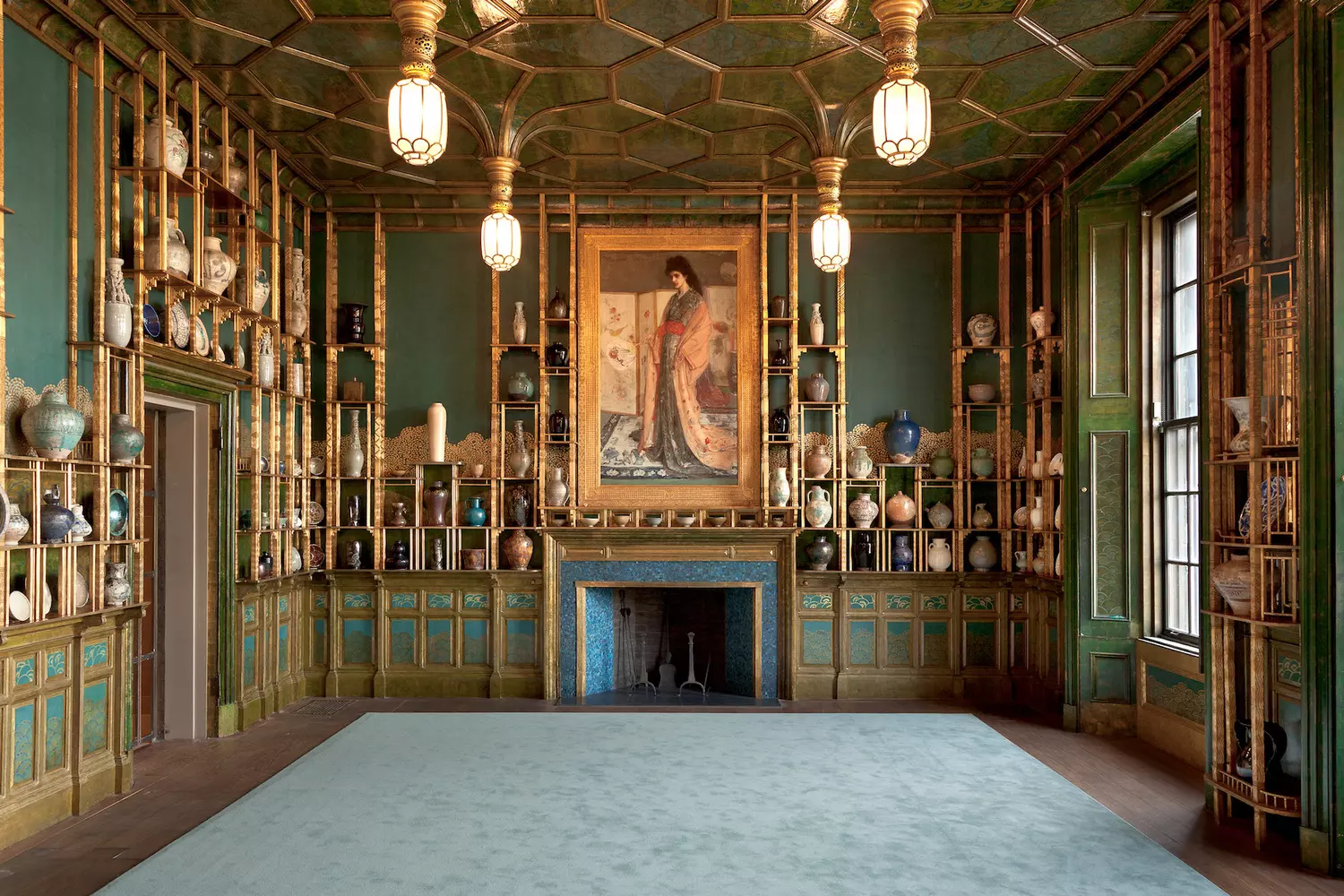
How Not to Get Lost in Washington: Smart Routes for an Unforgettable Visit
If you have only one or two days to explore Washington’s cultural treasures, it’s crucial to plan your time wisely. To avoid getting lost among numerous museums and attractions, it’s best to prepare a route in advance that lets you see the highlights and get the most out of your visit. Here are several options tailored to different interests and travel paces.
- 01. One-day itinerary: fast and packed
If you’re just passing through and have only one day, don’t worry — the U.S. capital can impress even in a short time. We recommend starting with the most popular and extensive sites:
- Morning: National Museum of Natural History
Here you’ll find exhibitions about incredible natural phenomena, prehistoric animals, precious gems, and much more. It’s a true treasure trove museum where every exhibit tells its own story. - Afternoon: National Museum of American History
After a rich morning, it’s time to dive into the country’s history — from the First Revolution to the present day. The museum café is perfect for a quick and tasty lunch. - Evening: National Air and Space Museum
End your day with a journey into space and aviation achievements. If you prefer, you can swap this for a calm evening stroll along the National Mall — the monument views and gentle sunset will leave unforgettable impressions.
- 02. Family day with kids: fun and educational
If you’re traveling with family, especially with children, it’s important to pick places that are interesting for both adults and little ones:
- Morning: National Zoo
Start the day with live experiences — watching pandas, elephants, and other animals will energize you and bring lots of joy. - Afternoon: lunch and visit to the National Museum of Natural History
After a fun morning, it’s great to continue with prehistoric animals and minerals, and the nearby café allows for a comfortable meal. - After lunch: interactive zones or a walk in the Hirshhorn Sculpture Garden
Many exhibitions where you can participate and play, as well as beautiful outdoor sculptures — a perfect end to a busy day.
- 03. Art and aesthetics: for lovers of beauty
For those who love immersing themselves in art and culture, Washington offers carefully curated routes:
- Morning: National Gallery of Art
This museum houses masterpieces of world art — from classics to contemporary works. Don’t miss the paintings by great masters and temporary exhibitions. - Afternoon: Hirshhorn Museum
A center of contemporary art with unique exhibitions and interactive art objects that will make you think and inspire you. - Evening: Sculpture Garden and dinner in the Penn Quarter area
A walk among unusual outdoor sculptures is a perfect way to relax after a full day. Nearby, you’ll find many cozy restaurants offering cuisine for every taste.
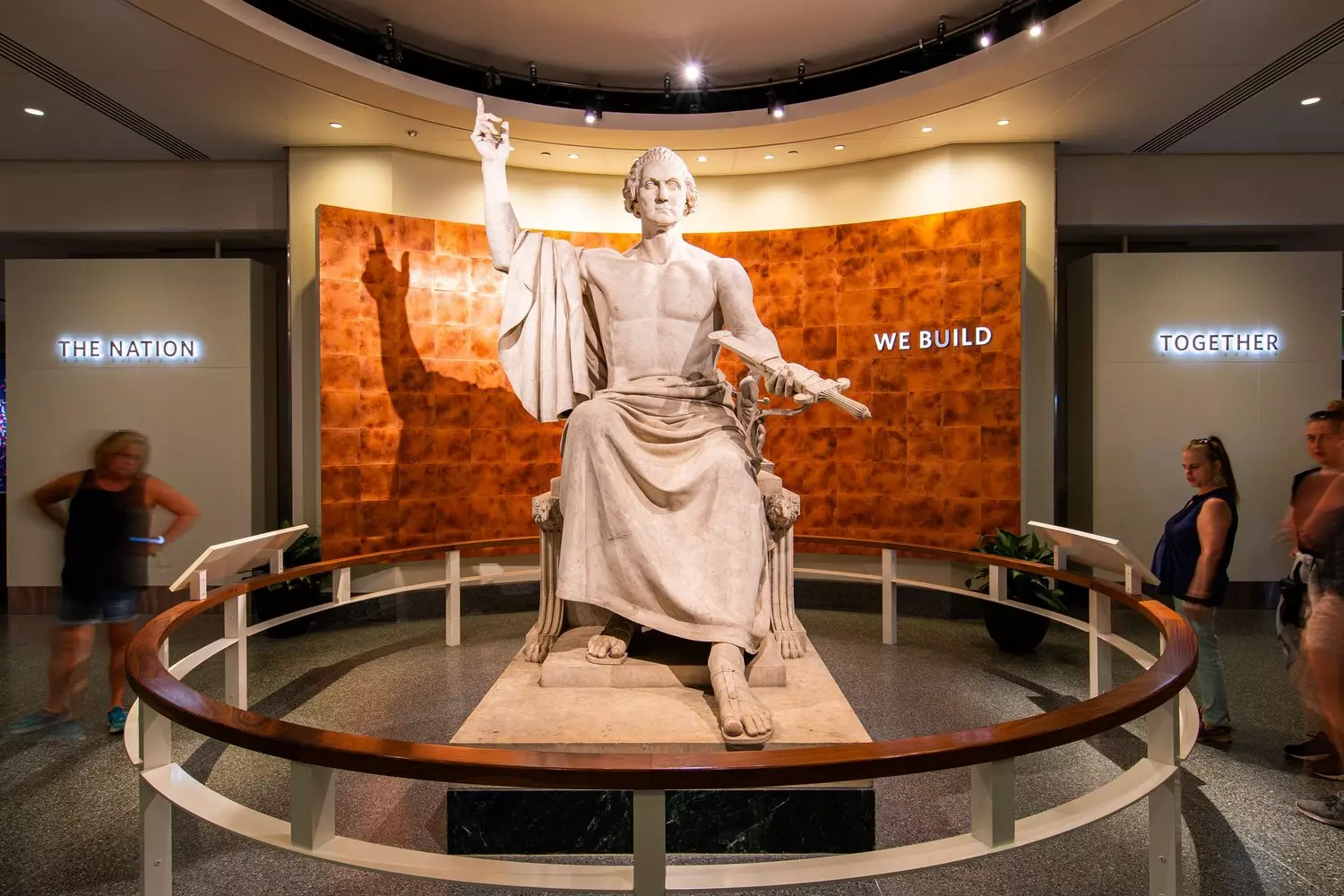
Why the Smithsonian Institution is More Than Just Museums
The Smithsonian Institution is not just a repository of artifacts, but an active research hub where science and technology work hand in hand to understand the world and make it better. Let’s take a closer look at how this happens in practice.
- 01. Technology for museums: from virtual reality to digital archives
To make exhibits as accessible and vivid as possible, the Institution implements modern technologies:
- Virtual tours and augmented reality (AR)
Now visitors can not only see museum objects in person but also explore them from home. For example, the Smithsonian X 3D project allows you to examine dinosaur and ancient animal skeletons in three-dimensional format directly on your smartphone or computer screen. Virtual reality helps recreate historical scenes, bringing the past to life and making the museum experience interactive. - Digital archives and databases
Millions of exhibits are digitized and available online. This gives researchers and ordinary users around the world access to unique materials without geographical restrictions. For example, the collection of photographs, manuscripts, and artifacts from U.S. history is constantly expanding and accessible via the internet. - Interactive exhibitions
Using touch panels, holographic projections, and artificial intelligence, new forms of experiencing art and science are created, allowing visitors to study exhibits in multiple layers of depth and from different angles.
- 02. Research shaping the future of the planet
In the Institution’s scientific laboratories and research centers, projects are conducted daily aimed at solving global problems:
- Climate change studies
Scientists analyze data on temperature, atmosphere, and biological systems to forecast the impact of global warming and develop recommendations for ecosystem protection. For example, the Institution’s team actively participates in projects monitoring polar ice and ocean currents. - Biodiversity conservation
Smithsonian specialists conduct observations and research on rare species of animals and plants. For example, work on preserving endangered amphibian species includes developing breeding methods and restoring their natural habitats. - Technologies in biology and medicine
The Institution’s laboratories study genetics, which helps better understand diseases and create new treatments. Research in bioinformatics and molecular biology supports the development of innovative drugs and diagnostics.
- 03. Examples of unique projects
- Smithsonian Conservation Biology Institute (SCBI)
A center where scientists work with rare species such as Sumatran rhinos and giant pandas. Programs include captive breeding and reintroducing animals into the wild. - Harvard-Smithsonian Center for Astrophysics (CfA)
A joint project with Harvard studying the universe, black holes, and dark matter. CfA scientists participate in major astronomical missions and create computer models of the cosmos. - Smithsonian Digitization Program Office
A team of specialists responsible for digitizing the Institution’s vast collections to make knowledge accessible to everyone in digital form.
Thus, the Smithsonian Institution is not only a cultural heritage site but also a center of cutting-edge research where technology and science serve societal development, nature conservation, and the education of new generations. Visiting the museums is just the tip of the iceberg beneath which science and innovation thrive.
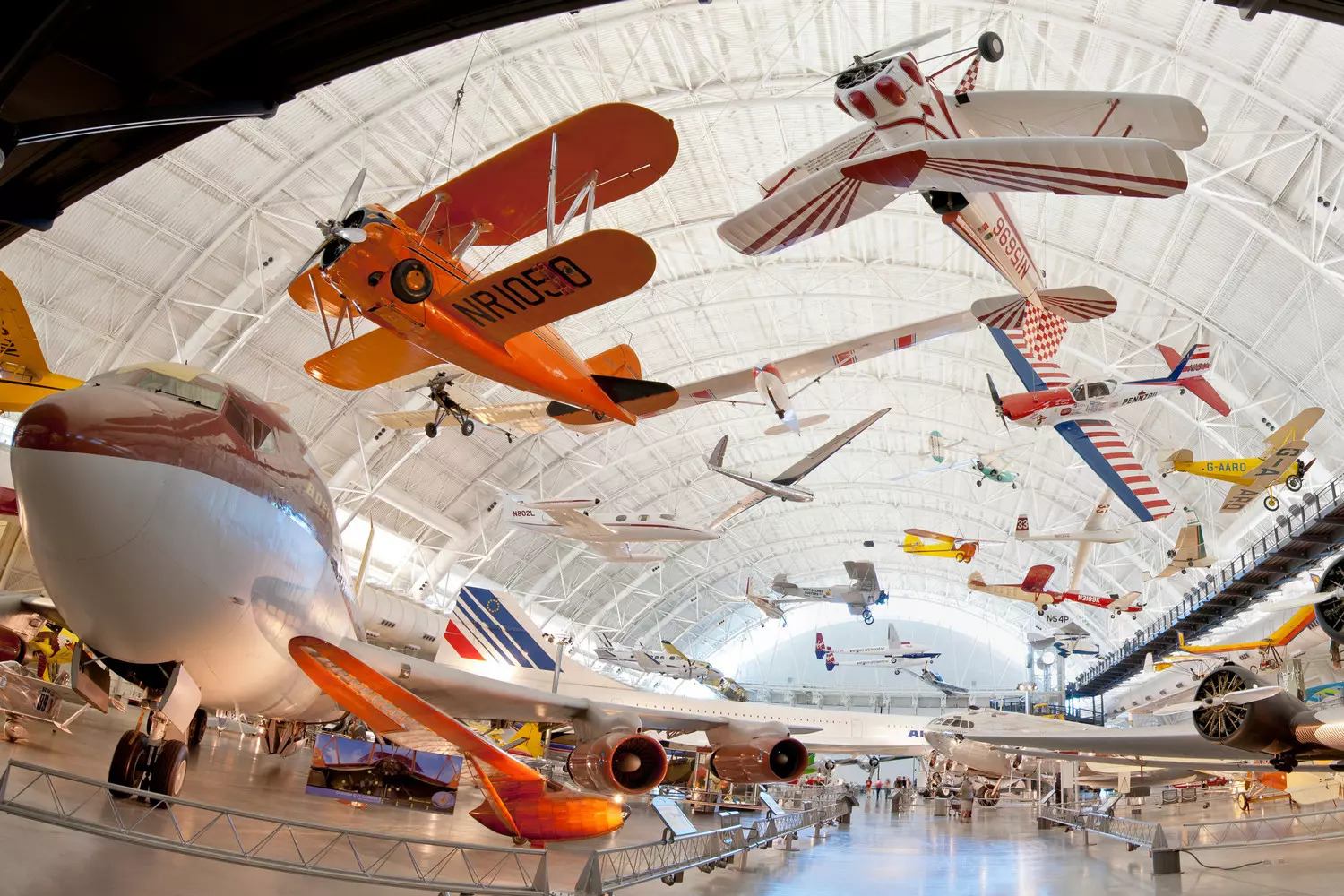
Smithsonian Institution: 20 Amazing Facts About the “Nation’s Attic”
The Smithsonian Institution is not just a collection of museums, but a true treasure trove of human knowledge, housing artifacts from the age of dinosaurs to space expeditions. Founded on the will of a British scientist who never even visited the USA, this complex has become a symbol of science, culture, and free access to education. But behind its majestic facades lie unexpected secrets, rare exhibits, and even Hollywood stories.
- 01. 157 million artifacts, but only 1% on display
The Institution’s storage holds rare meteorites, taxidermy of extinct animals, and even the dresses of First Ladies. For example, Abraham Lincoln’s hat, which he wore at the theater on that fateful night, or the "Hope Diamond," a cursed precious gem. - 02. There is its own "Pharaoh’s curse"
In the 1920s, several staff members died after opening an Egyptian sarcophagus in the museum. Later it was found that the cause was a toxic mold, but the exhibit gained a mystical reputation. - 03. A secret collection of giant squids
Smithsonian scientists study architeuthises — deep-sea monsters up to 14 meters long. Some specimens are so huge that they are exhibited only in special tanks. - 04. The Hollywood connection
The movie "Night at the Museum" was filmed in Smithsonian halls, but shooting took place in Canada — the original museums prohibited using lighting equipment near ancient artifacts. - 05. Hidden treasures
In secret storage rooms lie Walt Disney’s first film (1920s), Elvis Presley’s costume, and gold bars from a sunken ship. - 06. Expanding underground
Due to lack of space, the Institution built a gigantic underground complex in Maryland. There they restore airplanes, mummies, and even a piece of the Berlin Wall. - 07. Forbidden voodoo collection
In the basements of the National Museum of Natural History, 300 authentic Haitian voodoo artifacts are stored, including "living" dolls. For safety reasons, they are shown only to scientists. - 08. The giant bones scandal
In the early 20th century, the Institution was accused of destroying thousands of giant human bones to avoid rewriting American settlement history. Officially, these were said to be "animal remains." - 09. Secret alchemists’ laboratory
Until the 1940s, a closed group of researchers worked in the "Castle," attempting to obtain the Philosopher’s Stone from a collection of medieval manuscripts. - 10. The museum ghost cat
Night-shift staff at the National Museum of American History regularly see the ghost of a ginger cat that lived in the building in the 1920s. It especially "likes" the First Ladies’ exhibit hall. - 11. Classified UFO artifacts
After the closure of Project "Blue Book," the Air Force handed over 12 "unidentified objects" to the Institution. Only 7 people worldwide have access to them. - 12. The secret treasure room
In 2013, during renovations, a sealed room from 1862 was discovered containing gold bars of the Confederacy. They were left in place "as a historical artifact." - 13. Einstein’s missing brain
Part of the genius’s brain, stored at the Smithsonian, disappeared in the 1980s. In 2005 it was "accidentally" found in a cookie box in Mexico. - 14. Secret tunnel to the White House
A classified tunnel built during the Cold War runs from the basement of the National Museum of Natural History. Officially, it is "non-operational." - 15. The mermaid’s curse
A plaster cast of a "real mermaid" from Fiji dated 1842 causes equipment malfunctions. X-rays revealed inside... 3 additional skeletons of unknown origin. - 16. Hidden masterpieces
During World War II, 80% of the collection, including the Declaration of Independence and Rembrandt paintings, were stored in salt mines in West Virginia. - 17. Human experiments
In the 1950s-60s, controversial "race improvement" studies were conducted in anthropological departments involving prisoners. Archives were destroyed in 1977. - 18. Collection of vampire kits
There are 17 "anti-vampire kits" from the 19th century in storage, including stakes, silver bullets, and... instructions in Old Slavonic. - 19. The Hope Diamond and its "curse"
The legendary 45.5-carat Hope Diamond, displayed in the National Museum of Natural History, is one of the most "stolen" exhibits. About 50 visitors attempt to steal it annually but return it later, claiming the gem brings nightmares. - 20. Dorothy’s ruby slippers
The original ruby slippers from "The Wizard of Oz" are exhibited in the National Museum of American History. They were stolen twice and found in 2018 with the help of DNA analysis.
The Smithsonian Institution resembles a gigantic labyrinth where every new turn reveals either a brilliant scientific discovery or a frightening secret. Perhaps it is this blend of light and shadow that constitutes its true magic. This is a place where science meets history, and myths intertwine with reality. And who knows what other secrets its corridors still hide?
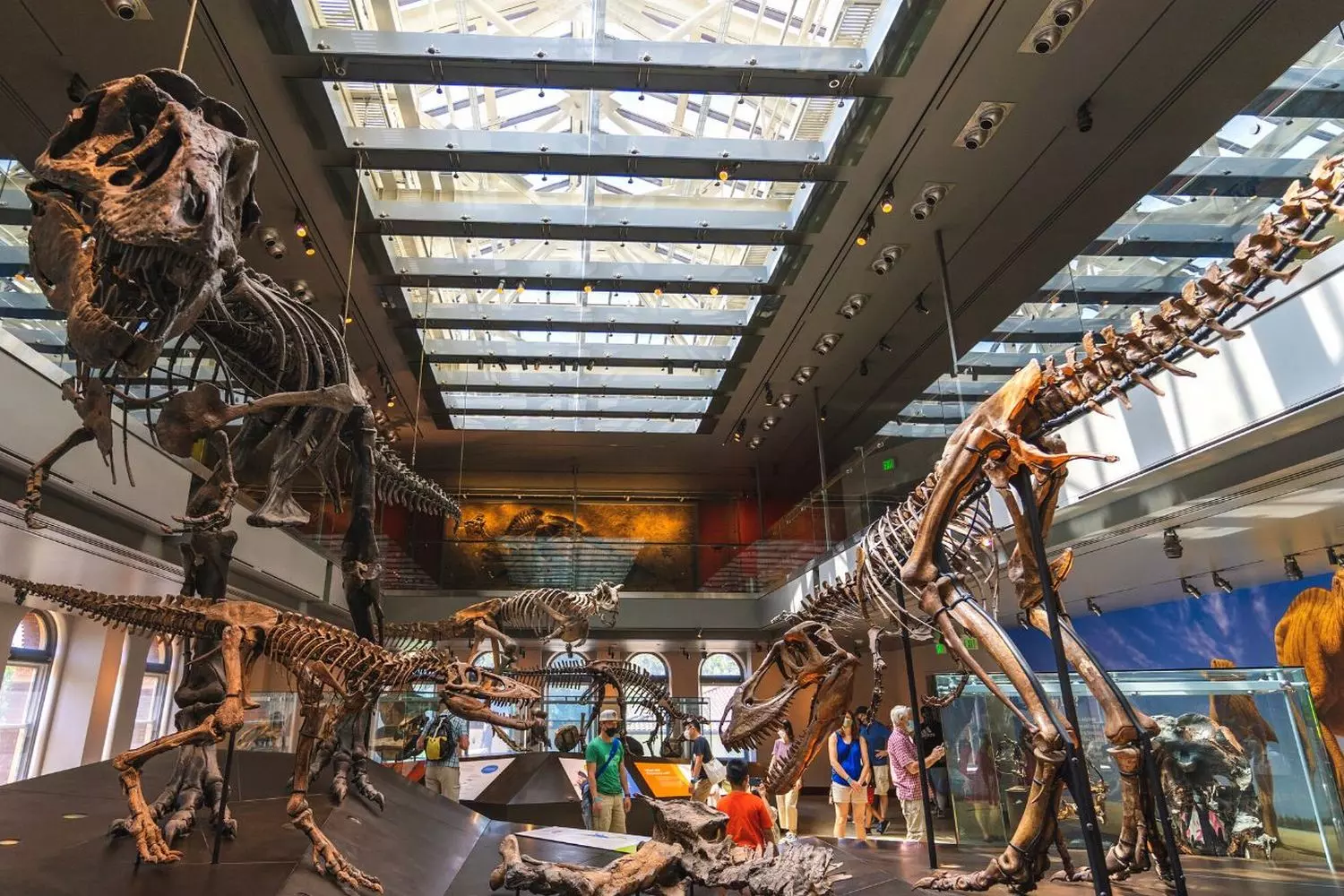
A Priceless Key to the World of Knowledge with American Butler
Smithsonian Institution is truly a unique gift — free to enter, yet to fully appreciate it, you need to know where and how to look. Each museum is not just a display behind glass, but a living story rich with meaning, revealing the past, present, and future of America and the entire world.
If you want more than just a walk through the halls, to truly understand the context, feel the spirit of the eras, hear vivid stories from experts, and save precious time and effort, then the best choice is a tour with a personal guide. The specialists at American Butler are not mere museum escorts but true connoisseurs who know every corner of the Smithsonian Institution and can craft a route perfectly tailored to your interests and available time.
Immersing yourself in the world of science, history, and art with American Butler is an opportunity not just to witness great cultural heritage but to become part of it — to feel like an explorer and pioneer. Every exhibit in the Smithsonian Institution is a window into the past and a key to the future, and we will help you open these doors as wide as possible.
Trust the professionals so your journey into the world of knowledge is bright, rich, and unforgettable. Your impressions will stay with you forever, and the knowledge gained will enrich your inner world and broaden your horizons.














